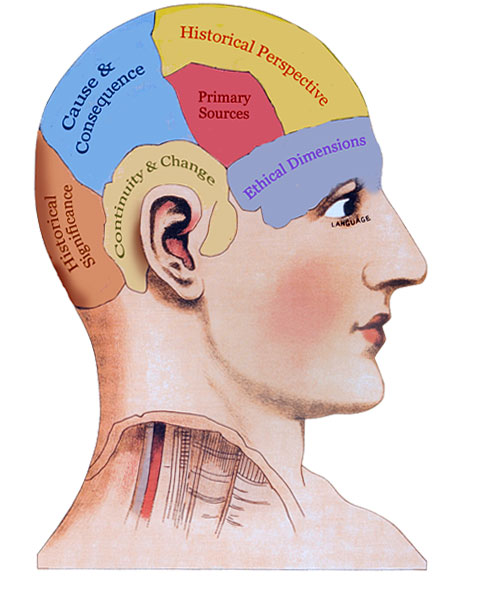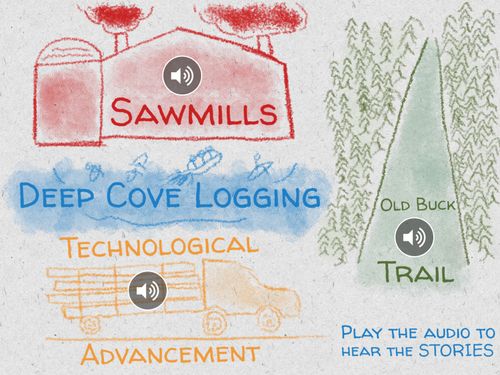The first white settlers arrived in the Deep Cove in 1889, and their appearance changed the area forever. Many events followed helped build the beautiful community that I call home today. I studied the local history of Deep Cove for the Marking History. The goal of the project was to build a walking tour with 20 individual stops created by students. My area of focus was the logging industry which yielding several stories that had never been shared with me before. I was amazed at the wealth of stories about my community that has been lost to history. These stories might not be overly significant to the history of the world but they do have significance to the growth of Deep Cove.

The Coast Salish peoples, who have lived near the Indian arm for generations, thriving in their traditional territory before the first contact with Europeans. Following the first contact with European settlers, their community was irreparably damaged by disease and territory encroachment. It is important to preface any story with the required context for its understanding. In terms of the Deep Cove settlement, we must recognize and respect the traditional Coast Salish territory that it lies upon.
I am a Historical Thinker
One of the main thrusts of the projects was to understand the 6 main ideas of historical thinking. These ideas create the framework for strong-minded, questioning historians.

The 6 main ideas are the following
-
Establish historical significance
-
Use primary source evidence
-
Identify continuity and change
-
Analyze cause and consequence
-
Take historical perspectives, and
-
Understand the ethical dimension of historical interpretations.
During the project, I used all 6 concepts to help navigate my research and curate my work. When studying the different elements of a historical thinker a few of the ideas resonated with me. Ideas like taking historical perspectives and analyzing cause and consequence are skills that I continue to build in my school projects and my experiences in the world. In this post, I will share my learning through the lens of a historical thinker.
Defining What We Value as Historians

At the beginning of the project, we were given an assignment where we could define what kind of historians we want to be. This challenge was called a historians oath, and it used the 6 main ideas of historical thinkers. In my historical oath I pledged to the following:
-
As a historian, I will strive to create a product with minimal bias
-
As a historian, I will consult a variety of sources
My endeavors this summer introduced me to conversations of bias. Whether it is implicit or conscious, bias is a fascinating concept. Bias has a considerable impact on society because of how it impacts storylines. I strongly believe that the storytellers hold the highest-burden in society for they control the collective population with their ideas. They have a responsibility to the truth because of the inordinate power they hold over the masses. I believe that those in positions of power have been abused their platforms to build deceit and degrade the value of evidence. I want to unequivocally denounce those that let bias control their conclusions.
Meaning is socially, historically, and rhetorically constructed.
– Clifford Geertz
I have always believed the collecting a wide range of perspectives is essential to the construction of any well-meaning historical piece. A collection of quality primary and secondary sources with corroboration can build legitimacy and confidence in your topic. Using this strong base of research you can ensure you include and value the perspectives that matter to the story you intend to tell.
I really enjoyed looking at historical events through the mindset of a historical thinker. The ideas laid out have a certain logic to them that I find very appealing. As I worked through this project I came across many moments in which I used the skills of a historical thinker. Someone leverages their skills as a historical thinker will build more powerful conclusions from historical events.
Taking Perspective
The inclusion of multiple perspectives was an important element of the marking history project. 2 or more perspectives were required in the final product. The end product of the project was to build a google maps pin and a brochure write-up for your location.
- The google maps pin included a written piece, an audio enhancement, a photo, and a digital enhancement.
- The brochure included a written piece and a photo.
Including multiple perspectives become easier when you have a wealth of information to provide those perspectives. The nature of my research topic of logging made it more challenging to give a wide range of views in my work. I did not find any primary sources, but I was able to leverage valuable secondary sources. Using the sources and my own inferences I was able to build the multiple perspectives that I needed to include in my final work.
In my digital enhancement, I created an interactive graphic that included 3 different storylines to help build a wider collection of perspectives. In my audio clip on sawmills, I spoke at length about the workers in the sawmills. Their work in supplementing the local economy was extremely important to the growth of Deep Cove. I talked about the more modern perspective of the symbols that the logging left behind. I also looked at the companies through the lens of the greater logging industry in my piece on technological advancements. The perspectives I choose to highlight define how the reader will interpret the stories I tell.
The auditory walking tour audio had a more connected storytelling arc. This forced me to be more creative in presenting different perspectives. I edited my script to ensure the inclusion of the stories of the workers and of the entrepreneurs. These 2 perspectives were the most important to the story of logging in Deep Cove.
Multiple perspectives can ensure that the views presented are not one-sided and better show the nuance of history. Those that believe that history is written by the victors are right in the fact that events are easy to interpret from your own perspective. Events are far harder to understand when you practice empathy and look at events from the position of others. A good historian uses different perspectives to build a far more balanced view
Written Challenges
I have never been particularly talented at using few words in my writing. In my previous work, I have used long building imagery to help build a more powerful story around my points. One of the major constraints in this project was the word count limits on our brochure and google map pin. This forced me to be more liberal with my words than I am used to. Being able to make as a powerful point in fewer words is an important skill that will serve me well for the rest of my life. The word count limit on the brochure was particularly restricting at 100 words to show weeks of research in such a short piece of text is challenging.

In my first few attempts, I felt as if my words came as meaningless as I worked on the surface instead of using meaningful words. I began to cut meaningless words without losing the integrity of the claims with help from my parents and classmates. After building the base text I began to nitpick certain elements of my text. This nitpicking helped me learn about some key writing techniques like avoiding passive voice and removing meaningless adverbs. Following these strategies, I built a strong piece of work that I am very proud of.

The value of creative constraint has been highlighted by my work in this project. In order to finish the product to my liking, I had to work with foreign skills. This act of getting me outside my comfort zone allowed me to build my writing skills in ways that wouldn’t have been possible if I was given unfettered creative freedom.
After the dust has settled in this project I have found myself pondering the question:
What does it mean to be a historian?
Anyone can be a historian in today’s era of the internet with endless information at your fingertips. However, a genuine historian is someone who is able to cut through the bias and the storylines to determine the real meaning. I strive to be a historian who uses the 6 skills to help understand the deeper significance of historical events. This deeper understanding will help bring clarity and learning from the past giving me a greater wealth of knowledge. I hate ignorance and mastering historical thinking is as far away from ignorance as anything. There a lot of elements an intelligent person has, and the skills that historical thinkers can help build that intelligence. To be a historian is to be strong in the face of ignorance, reactionary storylines, and bias in order to better understand the true meaning of historical events.


You outline your process really well through this project and I appreciate how you discuss what you struggled with as well (the constraint of words). Nice reflection on your process through the creation of his project!